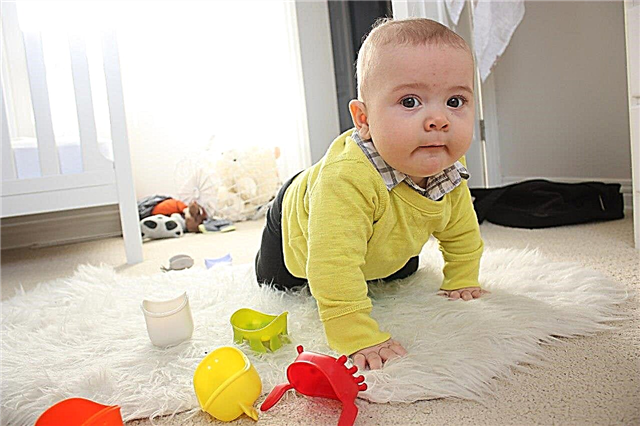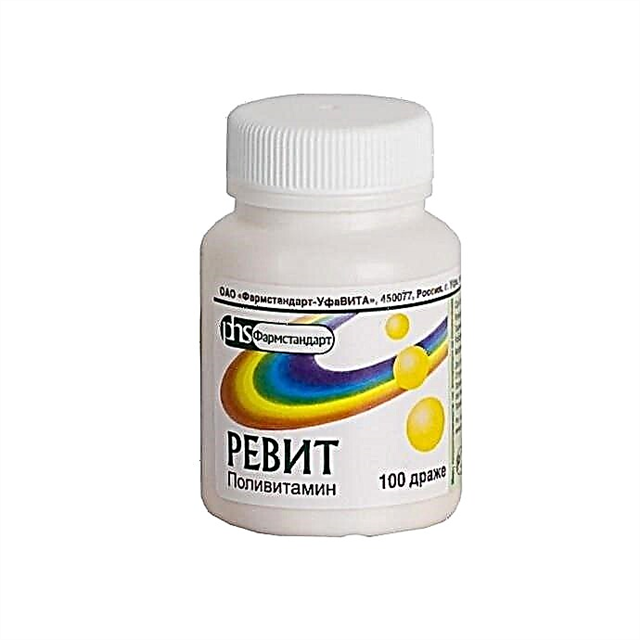
The origin of infant colic is not fully understood by science and medicine. But no doctor will deny the fact that more than 95% of babies aged from birth to 3-4 months suffer from the accumulation of gas in the intestines. Colic is an unpleasant reality for newly-made parents, and therefore it is not surprising that mothers and fathers of a crying baby are looking for ways to make life easier for the child and, of course, for themselves. One of the ways to help your baby is with a special massage. We will tell you how to do it in this article.

About colic
Before starting massage and other methods of dealing with infant colic, you should make sure that the baby is crying and naughty because of them, and not for another reason. It is quite simple to recognize colic: a child with an intestinal spasm tightens his legs, turns red, bursts into crying. Crying is harsh and demanding, colic pains are really quite strong. Most often, babies with colic begin to cry while eating or immediately after feeding.
The causes of colic, as already mentioned, are not obvious. Pediatricians tend to see the reason in the imperfection of enzyme production and their insufficient level in the newborn, in the physiological immaturity of the intestine and the period of its normal functioning.
More often than others, preterm babies, babies born with low birth weight and malnutrition, as well as large children, whose birth weight exceeded 4 kilograms, are susceptible to colic. A particular risk factor is overfeeding. If a child is overfed, then he suffers from colic many times more often. Mistakes in breastfeeding or bottle feeding, when the baby swallows air with food, also increase the likelihood of developing infant colic.

The peak of suffering occurs at the age of 0-3 months. Usually, after this period, the child calms down, the colic subsides. But for the parents of a newborn, three months seems like an incredibly long time, which somehow still needs to be lived through.
Pediatricians offer many ways to eliminate them: synthetic anti-colic drugs based on simethicone - drops, applying heat (a heating pad or a diaper pre-ironed with an iron). A special place among effective methods is occupied by a special tummy massage.


Massage characteristics and general rules
Massage belongs to the category of therapeutic and prophylactic. It is used to alleviate the condition of infants who are already suffering from the accumulation of gas in the intestines, as well as to prevent colic in babies who do not yet complain of increased gas production.
The massage can be done at home, there is nothing complicated about it. His techniques are simple and straightforward, any pediatrician whom you ask about it will gladly show them. But even without the presence of a doctor, the massage technique is not difficult, and we will describe it in detail below.
Massage helps to strengthen the weak anterior abdominal wall, improves peristalsis, promotes the discharge of intestinal gases, helps with constipation in infants, which are also found almost everywhere at an early age. The discharge of gases as a result of massaging movements relieves spasm of the intestinal wall, pain decreases and disappears, gases go outside, the child gets the opportunity to sleep and eat peacefully.

Contraindications
It is important for parents to understand not only how to do massage correctly, but when it is absolutely impossible to do it. This is a fundamental issue that can lead to serious complications and unpleasant consequences.
First of all, a massage of the abdomen for an infant is not done if the abdomen is very swollen, a blue venous mesh is visible through the skin. If the baby's belly looks asymmetrical, as well as in cases where even a slight touch to the belly causes sharp pain and a new crying attack, massage is contraindicated.
The presence of thick white, green, black mucus in the stool, as well as the presence of blood in the stool, are signs of pathologies that are not as harmless as ordinary infant colic. In all these cases, there may be a condition that requires surgery.

Frequent constipation, vomiting, fever, general lethargy, lack of tone, the presence of a rash, wounds, abrasions, prickly heat or an allergic rash on the tummy - all these are contraindications for massage. With caution and only with the consent of the doctor, you can massage the tummy of a child with an umbilical or inguinal hernia. If the hernia is large and parts of the internal organs come out into the hernial sac, massage is prohibited at all.
Do not massage children with increased convulsive readiness, epilepsy, severe CNS disorders. Such babies are entitled to medical massage, which is done by professionals. At home, mom's actions can lead to an attack.


Training
Before starting the massage, make sure that the room has the right microclimate that is optimal for the newborn. The air temperature should be no higher than 21 degrees Celsius with an air humidity of 50-70%.
The child needs to prepare a suitable place for manipulation. A flat and solid surface is optimal, on which, in the supine position, the vertebrae will not "sag", but will be in the correct position. A changing table is ideal as a good spot. If not, you can use a regular table.
All items and accessories that you will need during the massage should be placed on the edge of the table. Mom should not turn away from the baby even for a minute: the height of the changing table, and the dining table, is quite enough for a fall, burdened by severe traumatic consequences.

For the procedure you will need:
- oilcloth;
- a few wet wipes in case the baby describes himself, to quickly clear his skin of urine;
- disposable diaper;
- clean thermometer.
- baby oil or cream;
- some petroleum jelly.

Mom should eliminate the manicure, if she has one, cut her nails short, remove rings and bracelets.
Hands are washed in warm water with baby soap, if necessary, treated with an antiseptic (Miramistin is suitable).
The baby is undressed, for a few minutes he is allowed to take an air bath in an upright position, get used to the air temperature, after which he must be laid on a massage place, covered with a disposable diaper over an oilcloth, on the back with his stomach up.

Execution technique
Mom's hands at the time of the beginning of the manipulation must be warm. You can also apply a warm (not hot) diaper to the baby's tummy for a few minutes. After warming your own hands and baby's belly, you can start.
- Soften your own hands with cream or oil (if there is no massage, you can use any herbal). Apply a little on the tummy and distribute evenly.
- Massage your abdomen with light circular motions with your open palm, without touching the umbilical wound. Avoid pressing with the palm of your hand: the pressure can cause an onset of pain in the baby. The exercise is performed 10-12 times.
- With the index and middle fingers, with a slightly more tangible pressure, begin to "draw" on the belly of the spiral - from the navel to the ribs with an increase in each subsequent turn.
- The following exercise will resemble the movement of the blades of a water mill. Place both hands on your tummy, palms down. One hand massages the transverse muscles and the other the oblique muscles.
- With one hand, grab the baby's legs in the lower leg area, and with the other, start moving from the lower left corner of the abdomen up to the diaphragm, parallel to it and down. Thus, you draw the letter "P". It is important to start on the left side, from the side of the descending part of the intestine. This will help "push" the accumulated bubbles of intestinal gases to the natural physiological outlet to the outside - to the anus.
- Lay the baby on its side. Gently slide your open palm over the back with the transition to the lateral muscles. In this case, with the second hand, you need to press the legs bent at the knees to the stomach. After 10-15 such exercises, turn the child over on the other side and repeat everything again.

- Return the child to the supine position, grab the legs in the area of the feet, do several synchronous and alternate bringing the legs to the tummy ("Bicycle", "Squats").
- Carefully, gently and delicately stroke your tummy again, the movements should be soothing.
- Bring the legs to the stomach and help the child to empty the intestines if he is constipated by lubricating the anus with petroleum jelly and easily irritating it with a thermometer. If there is no constipation, it is not necessary to stimulate bowel movements. Usually, after the end of the massage, if it is carried out correctly, the child will poop in the shortest possible time.


Other methods
There are other methods of massage effects from gazes, which cause a lot of suffering to the baby. So, massage "belly to belly" is quite effective. With her naked tummy, mom applies the baby to her own belly, and then begins to breathe evenly, lifting the press. The baby's tummy will be in constant warmth, and it will also be stimulated by the mother's belly.
There is also acupressure with increased gas production. Reflexogenic points, which are responsible for bowel function, are located on the foot under the toes, just above the ankle and under the knees. You should first familiarize yourself with the location of these points. Massage them without pressure, in circular movements with a finger clockwise and counterclockwise 10 times each.


The opinion of Dr. Komarovsky
Evgeny Komarovsky, a pediatrician whose opinion is listened to by millions of mothers and grandmothers around the world, believes that infant colic should be treated as a kind of inevitability. There is not a single effective pharmaceutical remedy for them, and everything that is sold is essentially harmless, but completely useless drugs.
However, Komarovsky recognizes massage as a fairly effective way to alleviate the child's condition. Of course, he will not relieve colic at all, but it will significantly improve the condition. The doctor encourages mothers to massage very carefully, avoiding strong point impact with fingers on the baby's delicate abdominal wall and intestines.
In addition to massage, the mother, according to Yevgeny Komarovsky, should reconsider her attitude to feeding, give the baby the right breast, make sure that he does not choke while eating and does not swallow air.

After eating, be sure to hold the child upright, lightly patting the back with your palm. This will help regurgitate any excess air trapped in the esophagus. You cannot overfeed the child.
Laying out on the tummy Evgeny Olegovich considers it useful and necessary, but only during wakefulness, but leaving the baby to sleep in this position for the sake of preventing colic is a real parental crime. It is in the prone position that babies most often die from sudden infant death syndrome.

Reviews
Many mothers claim that they carry out preventive massage for colic and constipation to the child several times a day and this allows the baby to regularly empty the intestines, and also less often suffer from the accumulation and pressure of gas on the intestinal walls. The effectiveness of this effect has been tested by many generations of adults who raised children by massaging their tummies.
Mothers who carry out such a massage at least twice a day note that their children begin to roll over on their side earlier, on their backs from the abdomen, since massage strengthens the rectus and oblique abdominal muscles.
Not all babies, it should be noted, relate to such manipulations without rebellion.
If the child begins to cry, be capricious, the massage should be interrupted, limiting itself to at least half of the recommended exercises.

For information on how to massage against colic in children, see the next video.



